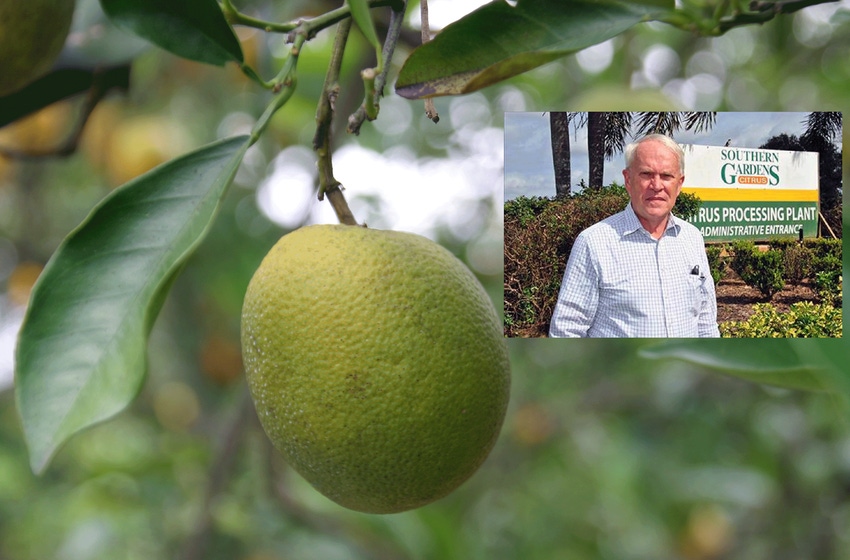April 12, 2016

Ricke Kress was just getting comfortable in his new role as president of Southern Gardens Citrus when a bombshell hit the company: A case of citrus greening had been discovered in the company’s Florida-based orange groves.
“I learned we had this disease two weeks after starting this job in 2005, and the sense of urgency has been 24/7 ever since,” says Kress, who leads one of the country’s largest orange juice companies with over 1.8 million trees in groves around Clewiston.
A bacterial disease spread by the tiny Asian citrus psyllid, citrus greening leaves fruit bitter, half-green and oddly shaped. “The ultimate net effect is that the tree will die because it’s not getting nutrients, and a newly planted tree is more susceptible because it’s smaller,” says Kress. “In severely affected cases, the fruit will fall off the tree.”
Florida’s $9 billion juice industry is second worldwide only to Brazil. From 2005 to 2008, the disease swept through the state, hitting all 8,000 growers and the 76,000 jobs responsible for most of the nation’s orange juice. With over 80% of trees infected, groves are close to reaching breakeven points. In Martin County, citrus production has dropped by over 90% since 1994.
Citrus greening is a potential game-changer for consumers everywhere who love a tangy, sweet glass of orange juice each morning.
And, for now at least, there is no cure.
Global threat hits home
When citrus greening made its first U.S. appearance in Florida, it had already crippled other groves, mainly in Brazil and the Far East. “As soon as we found out we had the disease, we knew we had better learn as much as we could as quickly as we could,” Kress says.
After meeting with impacted growers in Brazil, the company began inspecting trees four times a year, removing and burning infected trees, and controlling the insects, which are about as common in Florida as the mosquito. In the first six years, they removed 750,000 trees, about a third of its acreage.
Florida is a leading producer of oranges processed for juice. In California, citrus greening has only showed up in backyards of homes. While the disease has cost the industry millions, it could get far worse. “In California, 90% of citrus goes to fresh production,” says Kress. “You can’t blend fresh. This could be a bigger potential issue for California, even though it’s not in their groves yet.”
Meanwhile, research funding is coming in from the farm bill ($125 million over five years), along with an additional $21 million from USDA. Coca-Cola has donated some $3 million to help shore up the industry.
“Our company has spent north of $10 million since 2005 on research,” Kress says. “That’s just us; the industry has significant research projects they are working on in excess of $100 million.”
Hands full
Kress, a 45-year veteran of the food industry, already had his hands full when he arrived in Florida. In 2005 the citrus industry was battling canker, which gave him a front-row seat in how a disease can impact an industry. At the time, a statute forced growers to destroy every tree within 1,900 feet of a diseased plant. That’s the equivalent of 240 acres.
“We lost 4,500 acres due to canker,” he says. “It moved to other groves mainly on the wind, and we’re still living with that disease today. We had to terminate the eradication program because at the rate of 240 acres, we were eradicating the industry one tree at a time.”
Canker, citrus greening and other factors have doubled the cost of growing citrus in the last 10 years. Orange juice prices are up, consumption is down, and consumers are concerned about sugar. As a result, the processing plant outside Kress’ Clewiston office runs at only 8 million boxes a year, about 40% of full capacity. The industry’s projected production of 69 million boxes in 2016 is less than half its peak production in the 1990s.
Still, he’s optimistic.
“The Florida citrus industry will not go away; we are the gold standard for orange production in terms of quality,” he says. “When we find a solution to this, I expect to be at full capacity at some point in the future.”
You May Also Like




